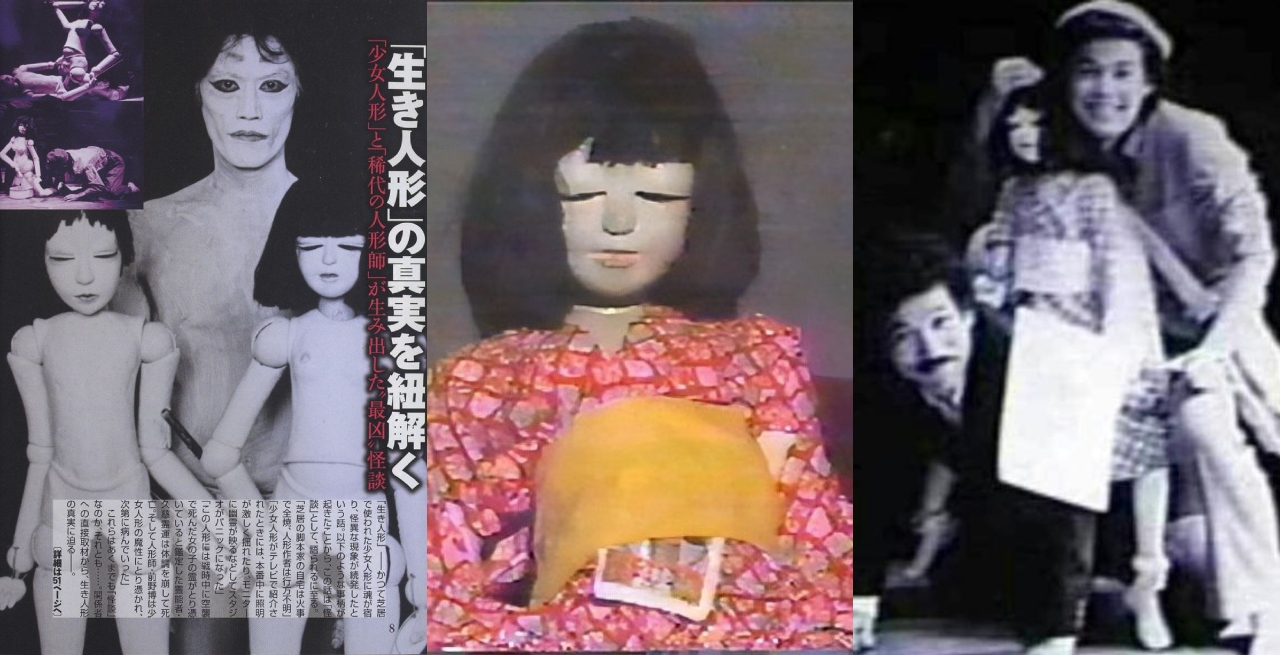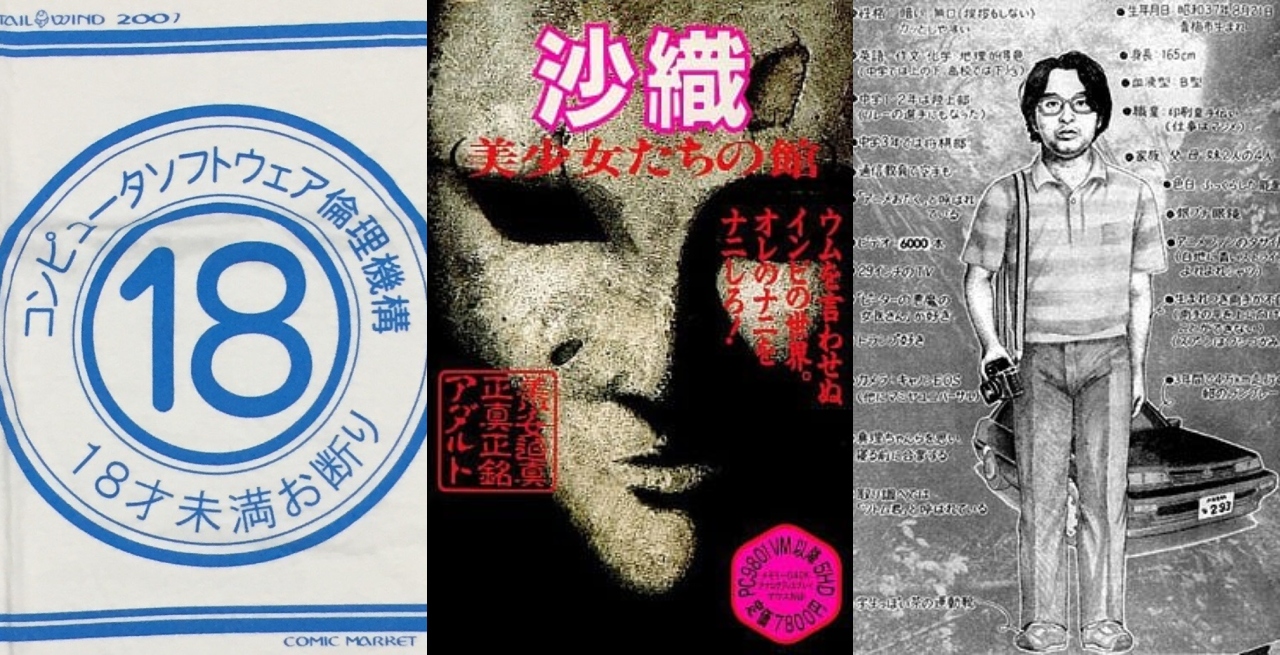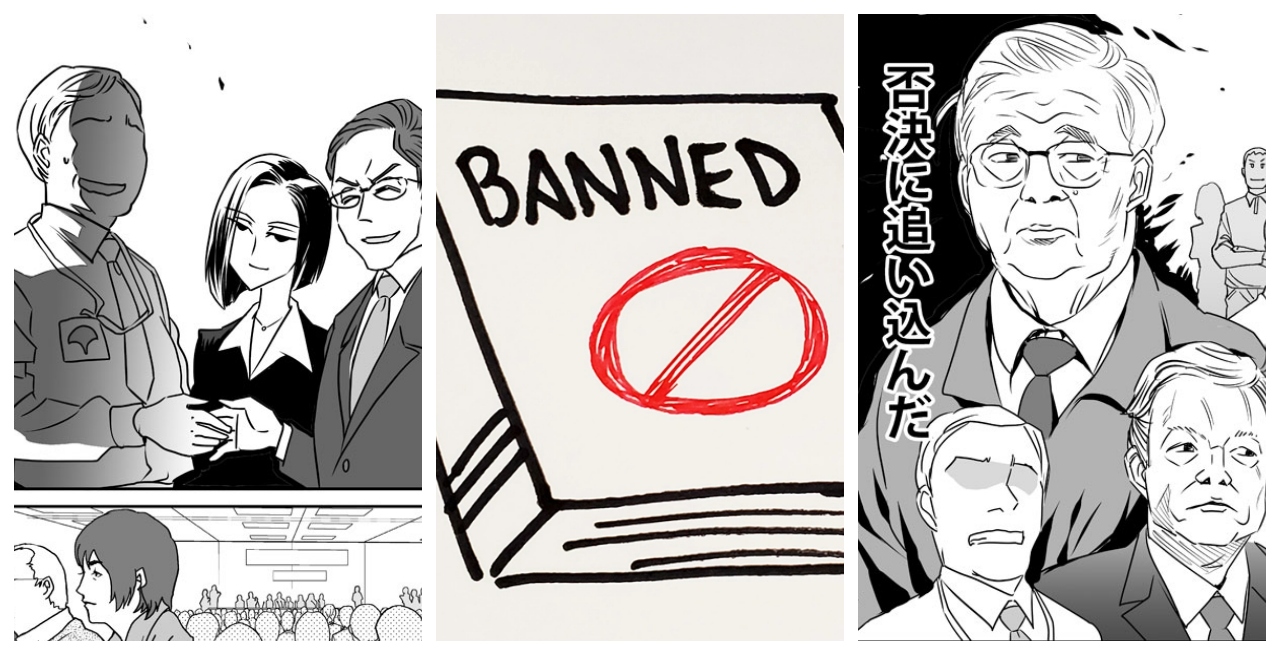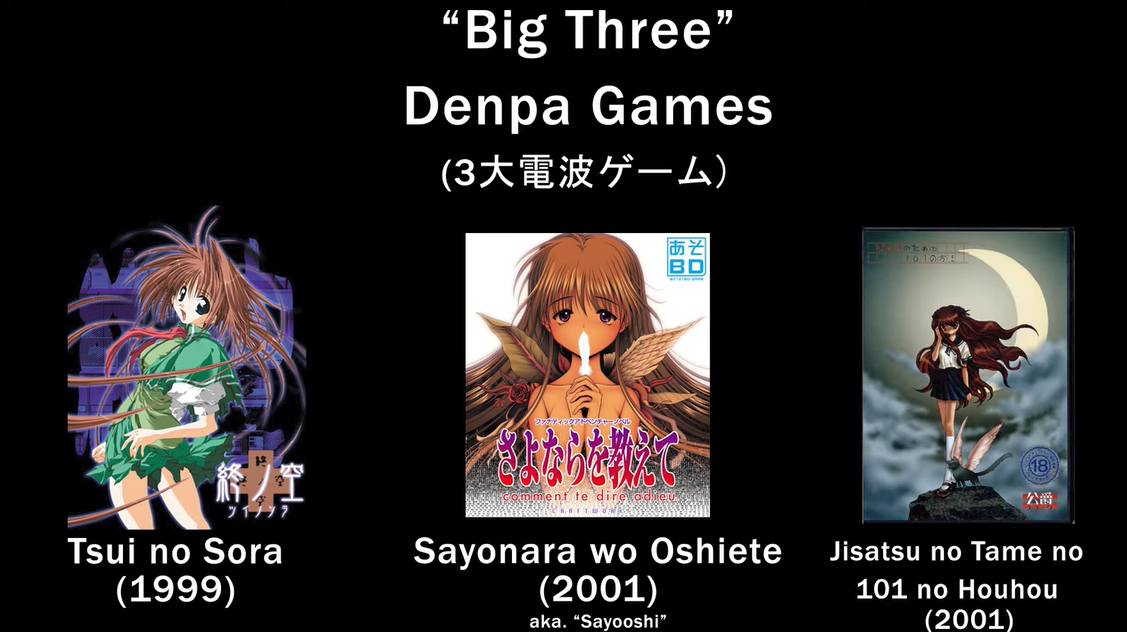
Hi fellow weirdos! This is Javi again, researching for you to bring you another interesting bit of Japanese media. We have previously discussed the term “Denpa,” which, according to Jisho.org, is a Japanese term for individuals who are disconnected or disassociated from the people around them. In the world of Visual Novels, Denpa serves as a subgenre category that focuses on the characters losing their grasp of reality and descending into insanity. These works often feature body horror, radiowaves, conspiracy theories, and shocking ero guro scenes.
Today, I want to introduce you to three lesser-known titles that fans consider the “Big Three Denpa Games.”. While they are not perfect, they certainly served as inspiration for more contemporary titles such as the spectacular Wonderful Everyday, Kimi to Kanojo to Kanojo no Koi, and the classic Saya no Uta. Let’s explore them then!
Tsui no Sora
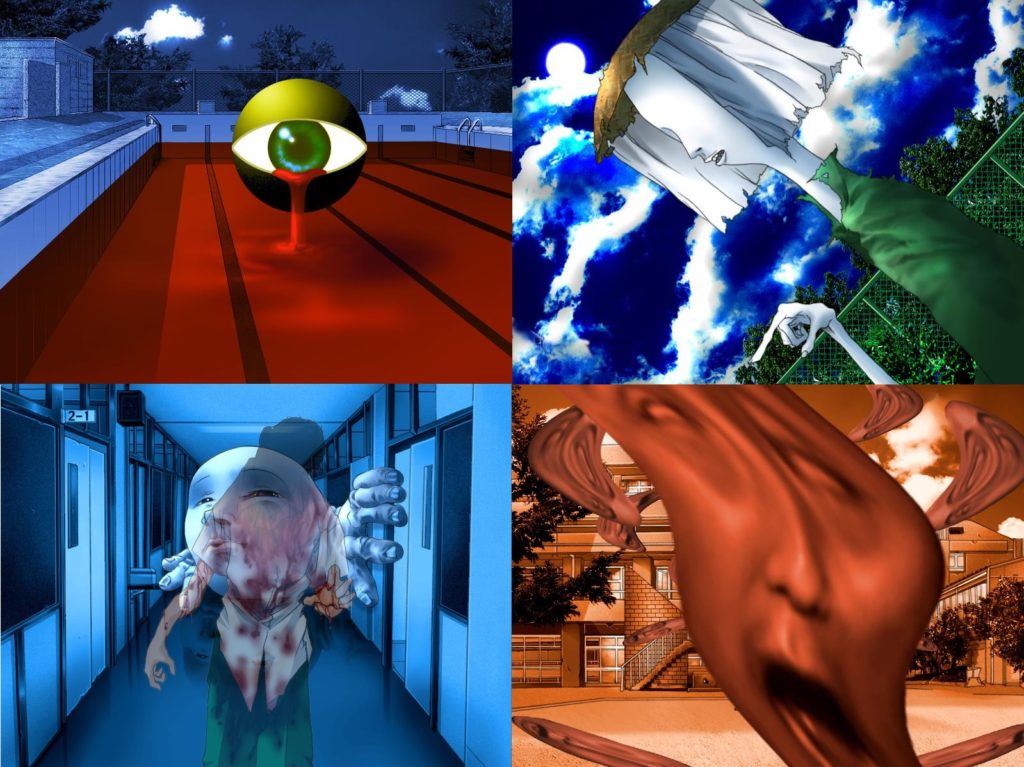
The first title in the triad is Tsui no Sora. Released in 1999 and written/directed by SCA-Di, this game is an early version of what would later become Wonderful Everyday. It follows the story of Yukito Minakami and his childhood friend Kotomi, who lead normal school lives until a friend tragically ends her life by jumping off the school roof. As their classmates speculate about what happened, rumors of the world ending start to circulate. To complicate matters, another classmate becomes an unhinged self-proclaimed prophet and cult leader.
Jisatsu no Tame no 101 no Houhou

The second essential denpa game is Jisatsu no Tame no 101 no Houhou. Released in 2001, this game may appear unfinished visually and narratively, but it packs a punch. The story revolves around Torabishi Takuji, a high school student who hears a noise he calls “grey.” This affliction blurs his perception of reality, leading to violent thoughts and confusion. As the narrative progresses, we learn about a supposed weapon that emits electromagnetic waves, causing people to take their own lives. Takuji and his classmates find themselves trapped in their school as the world crumbles around them, and cabin fever takes its toll, revealing the darkest aspects of their personalities.
Sayonara o Oshiete
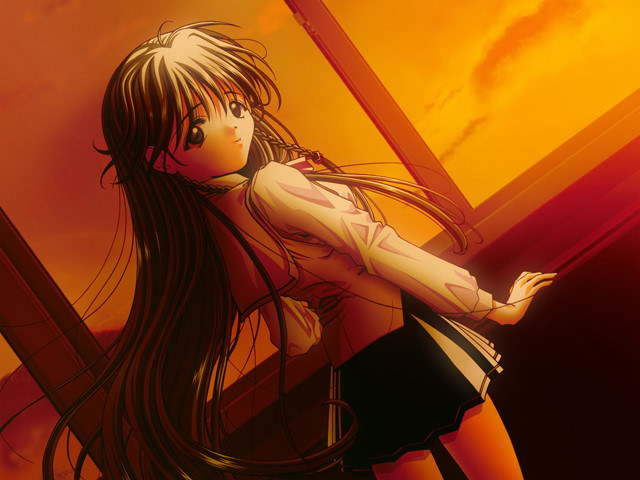
The last game in the triad is considered by many to be the best of the bunch. Sayonara o Oshiete, developed by Craftwork in 2001, tells the story of Hitomi Hirosuke, a student teacher in an all-girl high school. Plagued by disturbing nightmares featuring an angel and a tentacle monster, Hitomi seeks counseling from the school nurse, but the treatment only exacerbates his unraveling grip on reality. As the story unfolds, Hitomi becomes more acquainted with his students and encounters one who bears a striking resemblance to the angel in his dreams. From there, things take a dark turn.
These games are not for everyone, as they delve into bleak, depressing, and explicit themes. Some even caution players to approach them only if they are in a stable emotional state. Nevertheless, they are groundbreaking and creative, paving the way for many stories and tropes we now enjoy.
If you’re looking to add a new visual novel to your playlist or want to better understand the evolution of the denpa subgenre, I recommend watching at least a few playthroughs or analysis videos. You won’t regret it.
Shout-out to the wonderful AmelieDoree and her channel https://www.youtube.com/@AmelieDoree/@AmelieDoree. I’ve learned so much thanks to your videos!
More Japanese Deep Dives
Japan Deep Dive: Iki Ningyo, The Cursed Living Doll
Welcome, fellow weirdos, to another captivating exploration of Japanese culture. Prepare yourselves for a spine-chilling journey as we delve into a tale filled with possessed dolls, ancient curses, and the…
Japan Deep Dive: The Saori Incident
Hi fellow weirdos! Today we are discussing an obscure controversy that actually changed the whole Japanese adult video game industry. Dubbed “The Saori Incident” in the press, this 1991 affair…
Hanatarash: Japan’s Most Dangerous Band
Hanatarash, or Hanatarashi, are a two-piece noise band from Osaka, Japan. Composed of vocalist, visual artist Yamantaka Eye and guitarist Mitsuru Tabata, the band focused on the obscure music genres…
The Year Manga was Banned (But Not Really): A Deep-Dive Into Bill 156
Imagine yourself 12 years ago. You are an anime and manga fan who now has even more access to your favorite shows than ever before thanks to internet massification. Things…
Hi everyone! I am Javi from the distant land of Santiago, Chile. I grew up watching horror movies on VHS tapes and cable reruns thanks to my cousins. While they kinda moved on from the genre, I am here writing about it almost daily. When I am not doing that, I enjoy reading, drawing, and collecting cute plushies (you have to balance things out. Right?)

